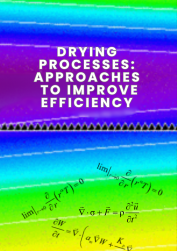Mathematical modeling of drying processes in porous materials considering capillary properties
Keywords:
Mathematical model, drying, electroosmotic drying, unilateral drying, bilateral drying, isothermal drying, drying kinetics, convection, diffusion, heat and mass transfer, capillary-porous material, capillary effects, continuum thermodynamics, moisture, moisture transport, multi-component system, phase, phase transition, structural model, ponderomotive force, sustainable technology, dispersed materials, gas-suspended state, fluidization, stress, optimization, deformation, anisotropy, numerical methodsAbstract
The paper aims to provide a detailed understanding of the drying kinetics and to identify conditions under which drying is most efficient, considering external factors such as airflow and electric fields. The model aims to predict the distribution of liquid and gas phases within the porous structure and the resulting mechanical stresses, contributing to optimizing drying processes in industrial applications. A particular focus is on the capillary properties of the porous medium being dried. Moreover, a sustainable mathematical model is proposed for analyzing the moisture and temperature distribution, radial displacements, and stresses within a multicomponent dispersed material of the capillary-porous structure. By solving the key system of differential equations for mass and heat transfer, and incorporating the mechanical properties of the material, the model predicts the changes in moisture concentration, temperature, and mechanical stresses in a material at any point in time and its placement within the layer. The work results provide insights into the drying kinetics and mechanical behavior of the grain under different drying conditions.

DRYING PROCESSES: APPROACHES TO IMPROVE EFFICIENCY
Downloads
Pages
Published
Categories
License

This work is licensed under a Creative Commons Attribution-NonCommercial-NoDerivatives 4.0 International License.

